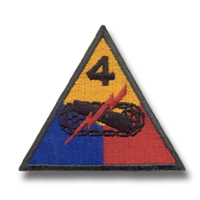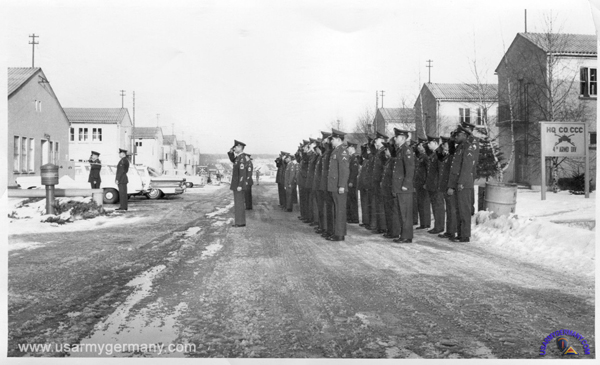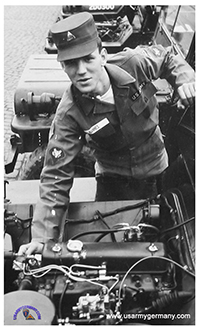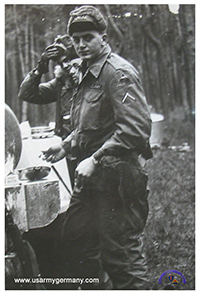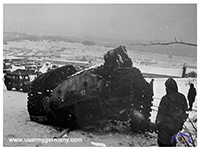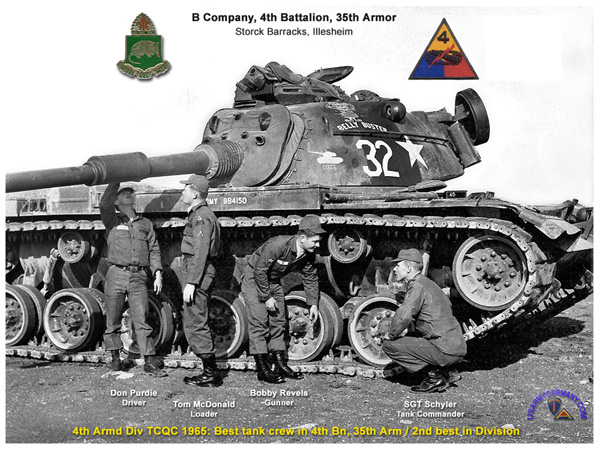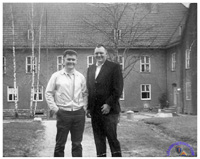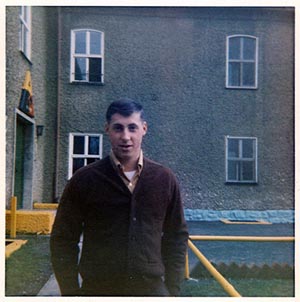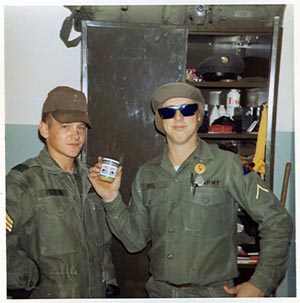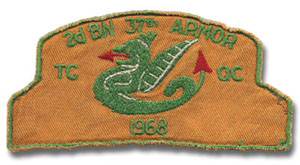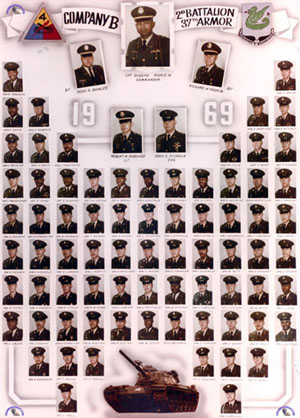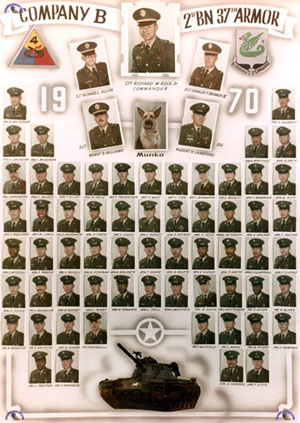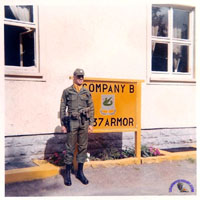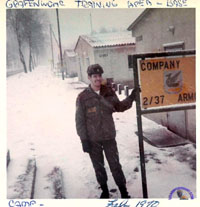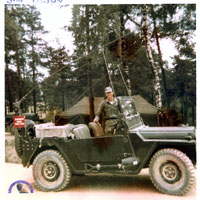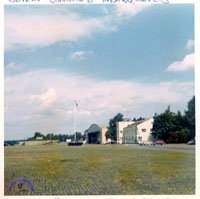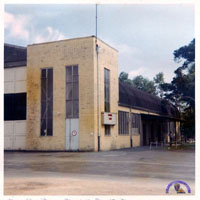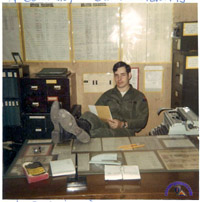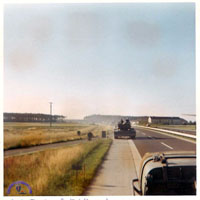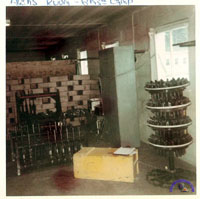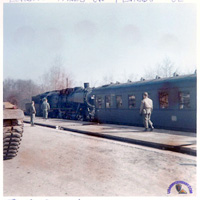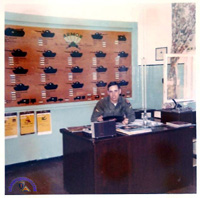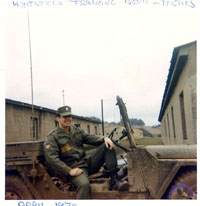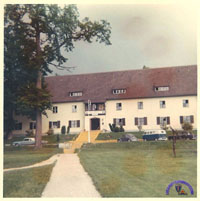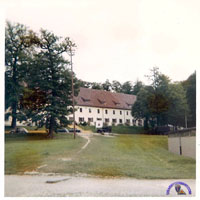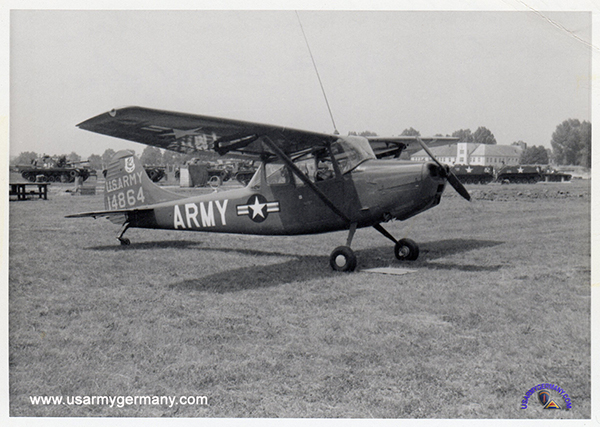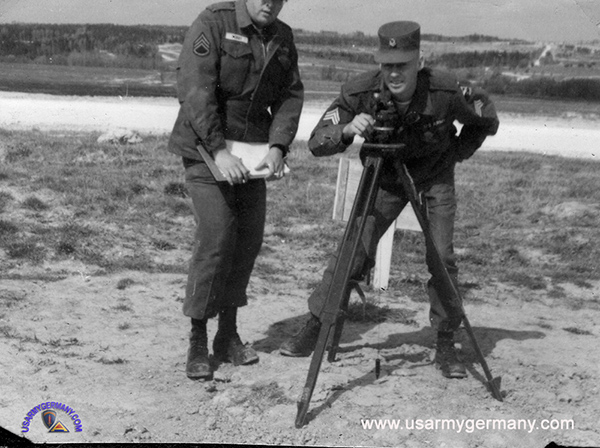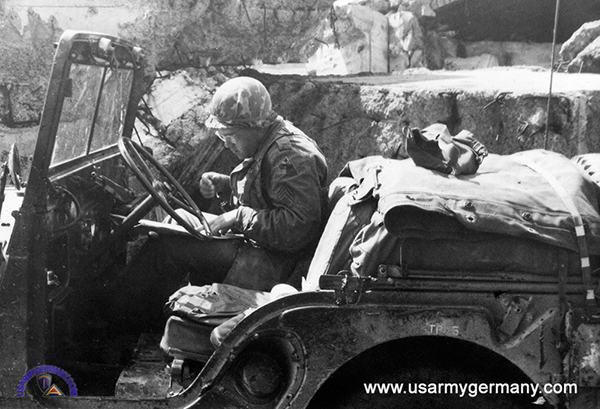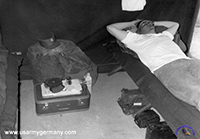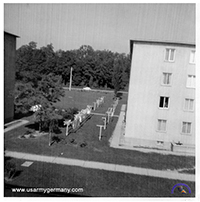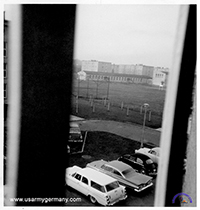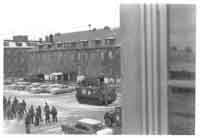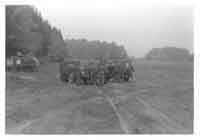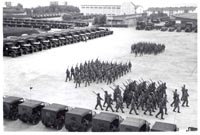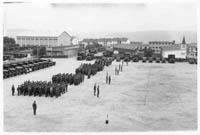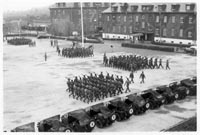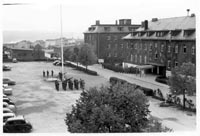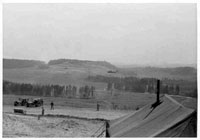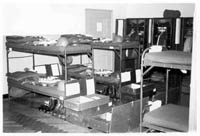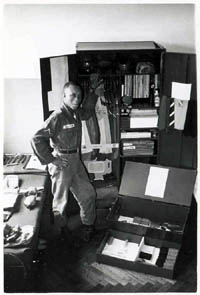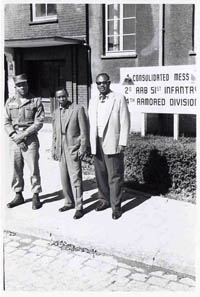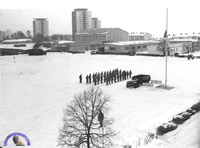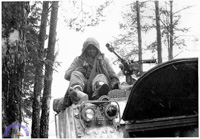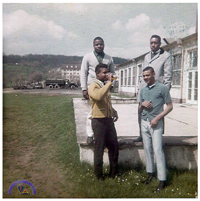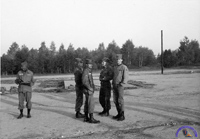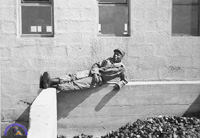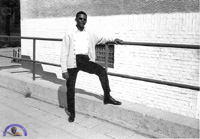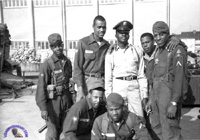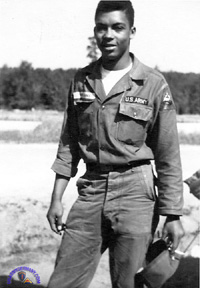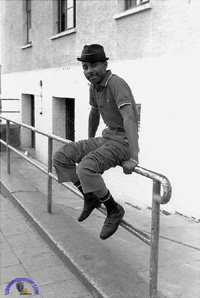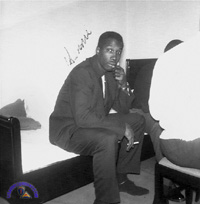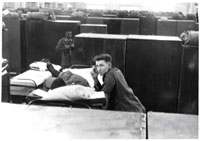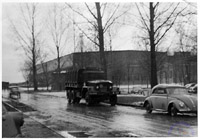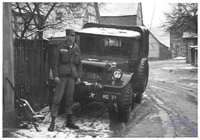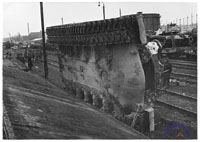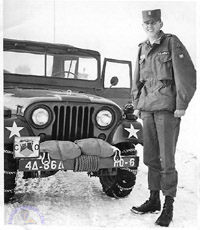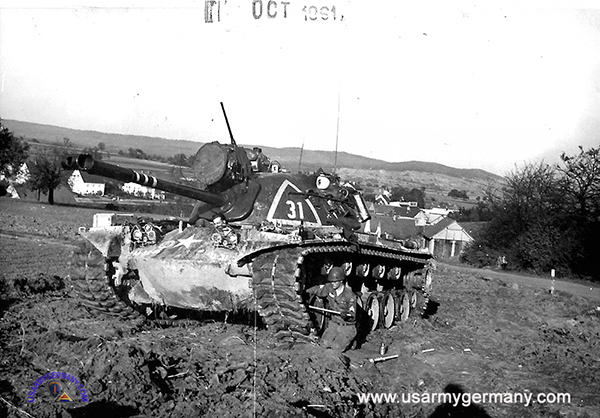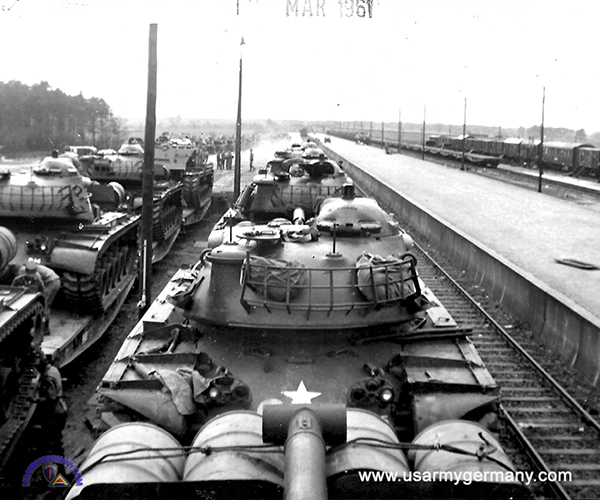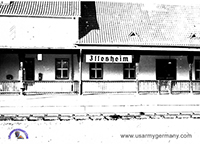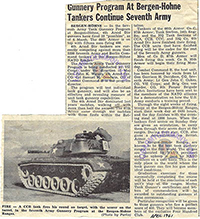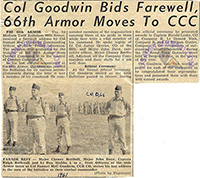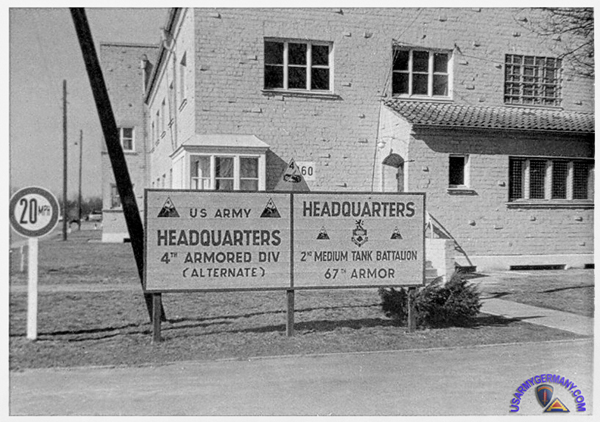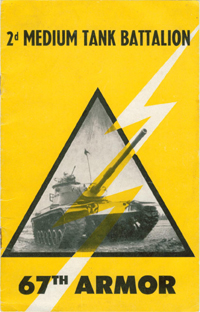| If you do NOT see the Table of Contents frame to the left of this page, then Click here to open 'USArmyGermany' frameset |
||||||||||||||||||||||||||||||||||
|
4th
Armored Division |
||||||||||||||||||||||||||||||||||
|
|
||||||||||||||||||||||||||||||||||
|
||||||||||||||||||||||||||||||||||
| Combat Command "A" / 1st Brigade | ||||||||||||||||||||||||||||||||||
| Combat Command "A" | ||||||||||||||||||||||||||||||||||
| 1958 | ||||||||||||||||||||||||||||||||||
| (Source: 4th Armored Division Yearbook 1958) | ||||||||||||||||||||||||||||||||||
| ORGANIZATION (1958): | ||||||||||||||||||||||||||||||||||
|
||||||||||||||||||||||||||||||||||
| 1st BRIGADE | ||||||||||||||||||||||||||||||||||
| 1969 | ||||||||||||||||||||||||||||||||||
| (Source: July 31 1969 issue of the ROLLING REVIEW) | ||||||||||||||||||||||||||||||||||
| ORGANIZATION (July 1969): | ||||||||||||||||||||||||||||||||||
|
||||||||||||||||||||||||||||||||||
| Combat Command "B" / 2nd Brigade | ||||||||||||||||||||||||||||||||||
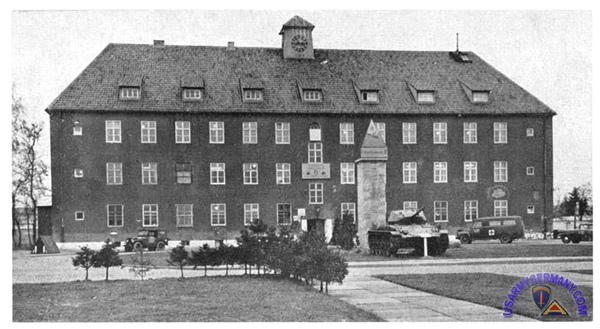 CC "B" Headquarters building, Ferris Barracks, Erlangen, 1958 |
||||||||||||||||||||||||||||||||||
| Combat Command "B" | ||||||||||||||||||||||||||||||||||
| 1958 | ||||||||||||||||||||||||||||||||||
| (Source: 4th Armored Division Yearbook 1958) | ||||||||||||||||||||||||||||||||||
| ORGANIZATION (1958): | ||||||||||||||||||||||||||||||||||
|
||||||||||||||||||||||||||||||||||
| (Source: Army Lineage Series: Armor-Cavalry, Part 1, 1974) 1) 2nd MTB, 67th Arm was relieved from assignment to 4th Armd Div on 1 July 1963 and transferred (less personnel and equipment) from Germany to Fort Hood, Texas. In effect, the battalion at Fürth was reorganized on 1 July 1963 but not redesignated as 2nd Battalion, 37th Armor until 23 August 1963 (a battalion previously assigned to the 2nd Armored Division at Fort Hood.) Can anybody confirm or correct this? 2) 2nd Rcn Sq, 15th Cav was replaced by 2nd Squadron, 4th Cavalry on 1 Aug 1963. (2nd Sq, 4th Cav, was concurrently relieved from assignment to the 1st Cavalry Division in Korea and transferred (less personnel and equipment) to USAREUR and assigned to the 4th Armd Div.) |
||||||||||||||||||||||||||||||||||
| 2nd BRIGADE | ||||||||||||||||||||||||||||||||||
| 1969 | ||||||||||||||||||||||||||||||||||
| (Source: July 31 1969 issue of the ROLLING REVIEW) | ||||||||||||||||||||||||||||||||||
| ORGANIZATION (July 1969): | ||||||||||||||||||||||||||||||||||
|
||||||||||||||||||||||||||||||||||
| (Source: STARS & STRIPES, March 21, 1970) | ||||||||||||||||||||||||||||||||||
|
||||||||||||||||||||||||||||||||||
| Combat Command "C" / 3rd Brigade | ||||||||||||||||||||||||||||||||||
| Combat Command "C" | ||||||||||||||||||||||||||||||||||
| 1958 | ||||||||||||||||||||||||||||||||||
| (Source: STARS & STRIPES, March 14, 1958) | ||||||||||||||||||||||||||||||||||
|
||||||||||||||||||||||||||||||||||
| (Source: 4th Armored Division Yearbook 1958) | ||||||||||||||||||||||||||||||||||
| ORGANIZATION (1958): | ||||||||||||||||||||||||||||||||||
|
||||||||||||||||||||||||||||||||||
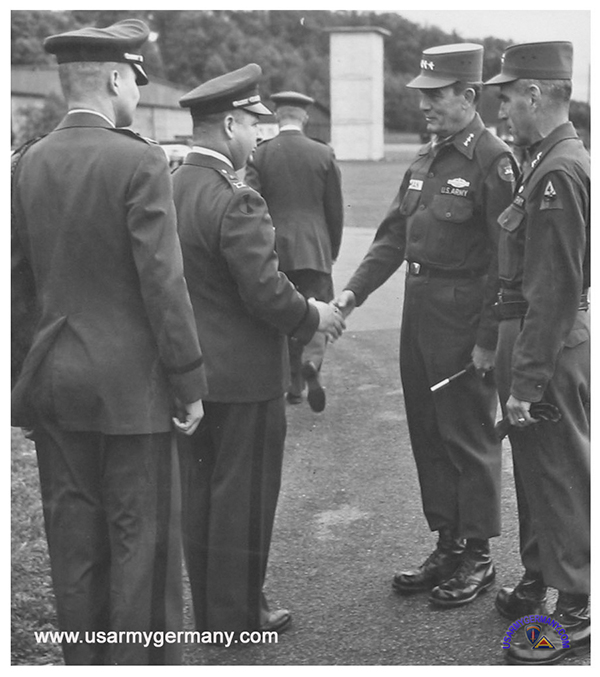 Generals Truman (CG VII Corps) and Franklin (CG 4th Armd Div) at a ceremony at Cooke Barracks in Göppingen, 1963 (Jack Reynolds) |
||||||||||||||||||||||||||||||||||
| 1963 | ||||||||||||||||||||||||||||||||||
| (Source: Email from Jack Reynolds) | ||||||||||||||||||||||||||||||||||
| Combat Comd "C" moved from McKee Bks, Crailsheim to Warner Bks, Bamberg in late 1963 and became 3rd Brigade. Commanding officers were Colonels (John M.) Gaustad and (James L.) Baldwin. Baldwin became a Major General and served in Viet Nam. I served as a draftsmen and Colonel’s sedan driver during my time from 1963 to 1965. |
||||||||||||||||||||||||||||||||||
|
||||||||||||||||||||||||||||||||||
| 3rd BRIGADE | ||||||||||||||||||||||||||||||||||
| 1969 | ||||||||||||||||||||||||||||||||||
| (Source: July 31 1969 issue of the ROLLING REVIEW) | ||||||||||||||||||||||||||||||||||
| ORGANIZATION (July 1969): | ||||||||||||||||||||||||||||||||||
|
||||||||||||||||||||||||||||||||||
| (Source: STARS & STRIPES, March 6, 1970) | ||||||||||||||||||||||||||||||||||
|
||||||||||||||||||||||||||||||||||
| Combat Command / Brigade Units | ||||||||||||||||||||||||||||||||||
|
||||||||||||||||||||||||||||||||||
| 4th Battalion, 35th Armor | ||||||||||||||||||||||||||||||||||
| 1965 | ||||||||||||||||||||||||||||||||||
| (Source: Email from Bobby Revels) | ||||||||||||||||||||||||||||||||||
|
||||||||||||||||||||||||||||||||||
|
||||||||||||||||||||||||||||||||||
| 1967 | ||||||||||||||||||||||||||||||||||
| (Source: Email from Dennis Reel, brother of the late Nathan Reel, 35th Tank Bn, 1967-69) | ||||||||||||||||||||||||||||||||||
|
||||||||||||||||||||||||||||||||||
|
||||||||||||||||||||||||||||||||||
| 2nd Battalion, 37th Armor | ||||||||||||||||||||||||||||||||||
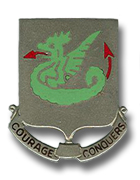 37th Armor Regiment DUI 37th Armor Regiment DUI |
||||||||||||||||||||||||||||||||||
| 1968 | ||||||||||||||||||||||||||||||||||
| (Source: Email from John Bogardus, 2nd Bn, 37th Arm, 1968-1970) | ||||||||||||||||||||||||||||||||||
| I served with the 2nd Battalion, 37th Armor, 4th Armored Division (Montieth Barracks) from 1968 to 1970. | ||||||||||||||||||||||||||||||||||
|
||||||||||||||||||||||||||||||||||
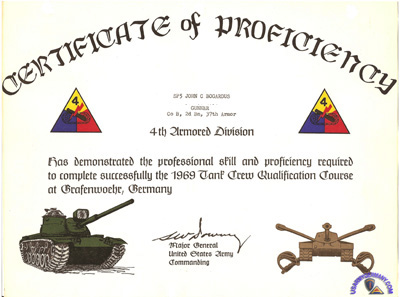 Copy of Certificate of Proficiency awarded to Sp5 Bogardus, TCQC 1969 |
||||||||||||||||||||||||||||||||||
|
||||||||||||||||||||||||||||||||||
| 3rd Battalion, 37th Armor | ||||||||||||||||||||||||||||||||||
| 4th Armor Group | ||||||||||||||||||||||||||||||||||
 37th Armor Regiment DUI 37th Armor Regiment DUI |
||||||||||||||||||||||||||||||||||
| Webmaster notes: 3rd Medium Tank Battalion, 37th Armor was activated on May 1 1958 in Germany, replacing the 714th Tank Battalion that was inactivated concurrently. The Battalion was stationed at Conn Barracks in Schweinfurt and assigned to the 4th Armor Group in Frankfurt. On June 17 1963, the Battalion was relieved from assignment to the 4th Armor Gp and reassigned to the 4th Armored Division. No change in station. On August 1 1963, the Battalion was redesignated as 3rd Battalion, 37th Armor. The 3-37th Armor Battalion moved to Crailsheim around 1964 and moved once more, this time to Erlangen, around 1966. If anyone can provide more details (specific dates?) on these moves, please contact the webmaster. |
||||||||||||||||||||||||||||||||||
| 1959 | ||||||||||||||||||||||||||||||||||
| (Source: Email from George Guscott, 3rd MTB, 37th Armor, 1959-61) | ||||||||||||||||||||||||||||||||||
| I was stationed at Conn Barracks from Nov 1959 - Apr 1961 assigned to Charlie Co., 3rd Medium Tank Bn, 37th Armor, as a tank driver. Conn Barracks, as I remember it, also had an MP Co. and an Artillery unit stationed there. There were bi-monthly trips to the field training area where we played war games against an unseen enemy! Prior to WINTER SHIELD I, which we participated in, we loaded our tanks on flat cars for the train ride to Grafenwhoer. It was the US ARMY against the GERMAN ARMY (what there was of it) AND the British Forces stationed in Germany. Two weeks of running around in the woods and fields, it was glorious. However not without tragedy. We lost two maintenance personnel and one trooper due to accidents. Back to Conn Barracks and several weeks of repairing equipment getting ready for a trip to the tank gunnery range in Belsen, Bergen-Hohne area. This was a ten week stint that all the armored personnel in Europe came to hone their gunnery abilities. On weekends we were able to visit the huge grave area and gas chambers left over from the war. I became company training nco after Grafenwhoer and had access to a huge library of Army war films which I would requisition and show during week nights to entertain the company troops and whoever wanted to watch. Some very gruesome films depicting the freeing of war prisoners and burying the dead. Company officers were Capt Robert R Perkins, Lt Merwyn L Jackson, Lt. Donovan, Mst Martin, and many ncos. I can remember several of their names and friends of mine that served in Charlie Co. many of who have long passed. |
||||||||||||||||||||||||||||||||||
| 4th Armored Division | ||||||||||||||||||||||||||||||||||
| 2nd Armored Rifle Battalion, 41st Infantry | ||||||||||||||||||||||||||||||||||
| 1958 | ||||||||||||||||||||||||||||||||||
| (Source: Email from Bill Perry, son of Sgt. Maj. B.D. Perry) | ||||||||||||||||||||||||||||||||||
| Wiley Barracks was home to Combat Command A (CCA) of the 4th Armored Division. My father arrived there in 1959 with the 2nd Armored Rifle Battalion, 41st Infantry.
The unit was later redesignated as 1st Battalion, 51st Infantry. He was a Staff Sergeant (E-6) and a Davey Crockett Nuclear Mission Platoon Sergeant. This was the only time US Army infantry units in fact had nuclear weapons at their disposal. I recall my father saying during the Berlin Crisis, 7th Army command in Heidelberg had release partial nuclear codes required to in fact deploy these weapons. My father and other Davey Crockett capable units in Germany were forward deploying in the event of a Soviet attack over Berlin. High drama back in the day. He would marry a local German girl and I arrived in 1961, born at the Augsburg Army Hospital. They were remarried 48 years, my father passed in 2009 as a retired Command Sergeant Major. He retired in 1979 at Fort Knox. I would attend my entire third grade (69 / 70) at the Neu-Ulm American Elementary School (grades 1 – 6) while my father served with the 4th Infantry Division in Vietnam during his second tour. |
||||||||||||||||||||||||||||||||||
|
||||||||||||||||||||||||||||||||||
| 2nd Battalion, 51st Infantry | ||||||||||||||||||||||||||||||||||
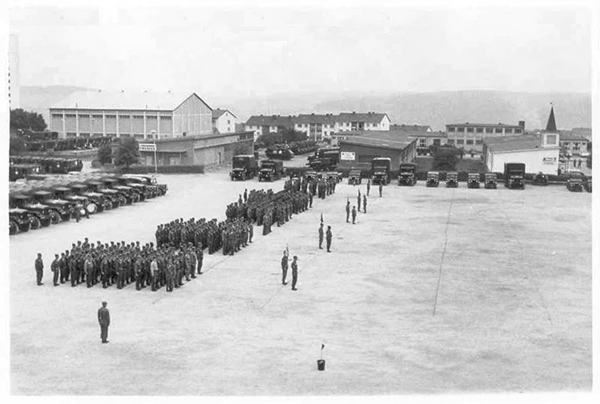 2nd Battalion, 51st Infantry, Ford Kaserne, Ulm, 1960 |
||||||||||||||||||||||||||||||||||
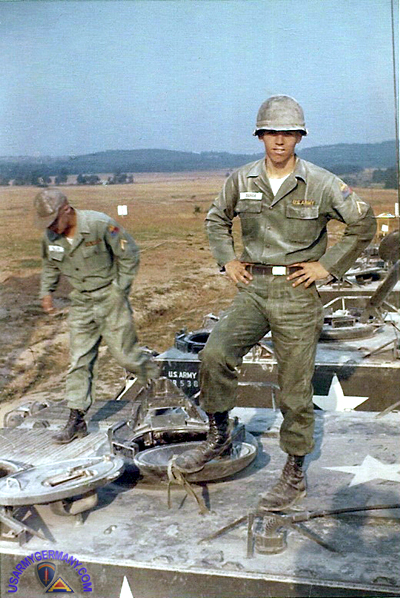 Mechanized Infantry - 2nd Bn, 51st Inf, Ulm, c. 1963 (Billy Robinson) |
||||||||||||||||||||||||||||||||||
| 1958 | ||||||||||||||||||||||||||||||||||
| (Source: Email from Bruce W. McMullan) | ||||||||||||||||||||||||||||||||||
| Stumbled upon your website thanks to Google and was brought back fifty years by tales of my outfit stationed in Ulm. Like most of that period, I was drafted on May 8, 1957 and after orientation, getting outfitted in the latest style of fatigues, and watching the WAC's drill at Fort Jackson S.C. was shipped off by air to Fort Hood Texas.
I was assigned to "D" Company, 2nd ARB, 51st Infantry, 4th Armoured Division, which was scheduled to "gyro" to Germany at the end of November. Following basic, including rifle training in the full Texas sun in June and July, I was sent to 3rd Corps NCO School while my colleagues went through advanced basic training. I was first in my class and was immediately given acting stripes and made a squad leader since they were desperately short of NCO's. Shipped out via Fort Dix NJ and the Brooklyn Naval Terminal aboard the USS Maurice Rose. Instead of going up the English Channel we went North by way of the North Sea to Bremerhaven through a typical late Fall North Sea storm. I'd guess that those of us who did dot puke our way to Germany was a slim minority. Originally we were assigned to Boelke Kaserne in Ulm (a lot of confusion since our original posting was to be in Worms). Our armor did not arrive for at least two more weeks so we did our daily alert drills in the middle of the night using deuce-and-a-half trucks to take us from the barracks to the operational fields. Other than waking up our German neighbors, and tearing up into mud a number of German farms, we were accepted by the locals. However, when our armor arrived and we sped out on alert we destroyed the curbs, trolley tracks, and good humour of the locals. Hence by the beginning of 1958 we were moved to Ford Barracks from which we simply crossed the road to dirt trails leading to our alert area. Shipped back to Germany on another troop ship which this time did go via the channel, and was a much smoother ride. This after picking up another gyro division in Savannah GA. Since I was "casual" I got to eat in a real mess with waiters and everything except booze...just like a cruise ship. So they had us return to Ulm and then proceed to Bad Tolz (about 80 km south of Munich) without our armor. Nice gig. Every day we took helicopters at tree top level over the Alps. We were dropped off and told to search for any evidence of the "Special Forces" who had parachuted into the area (the original Green Berets). Obviously they were too smart for us (although we did find some hidden parachutes etc) but we always found a nice Gasthaus where we could stack our arms, drink beer all day, and at the appointed hour return to the LZ to get a ride back to our bivouac area. As a result I was assigned to a different platoon with a Sergeant from Muleshoe, Texas (Do I need to draw you a picture of how that relationship worked out?) Anyhow, I applied for early discharge to return to school (graduate work at Yale) and was shipped home in January1959 again on the USS Maurice Rose. Many of my colleagues who served out their full two years were caught in the recall in 1961 when the Berlin Wall went up. I happily missed that (although I did a lovely two week summer camp in tic infested Pennsylvania. |
||||||||||||||||||||||||||||||||||
| 1960 | ||||||||||||||||||||||||||||||||||
| The protagonist of some of the photos that I recently acquired seems to be a Pvt Drayton of the 2nd ARB, 51st Inf at Ford Bks, Ulm in 1960 - does anybody remember him? |
||||||||||||||||||||||||||||||||||
| 1962 | ||||||||||||||||||||||||||||||||||
| (Source: Email from Billy Robinson, 2nd Bn, 51st Inf, 1962-1965) | ||||||||||||||||||||||||||||||||||
| I was stationed with the 2nd Bn 51st Inf from 1962 until 1965. I have a few pictures I would love to share. |
||||||||||||||||||||||||||||||||||
|
||||||||||||||||||||||||||||||||||
| 1963 | ||||||||||||||||||||||||||||||||||
| (Source: Email from Bill Black, HHC, 2nd Bn, 51st Inf, 1963-1965) | ||||||||||||||||||||||||||||||||||
| Glad I found your site. I was stationed at Ford (Barracks) Kaserne in Ulm, Germany from Jan 1963 til May 1965 at HQ/HQ Co 2nd Bn, 51st INF, 4th ARM DIV as the Chaplain's Asistant under Chaplain (Captain) James T. Hyatt. It was great to see pictures of the HQ/HQ Co building etc. Brought back memories. Can't seem to find much on the units history anywhere? Where did 2nd Bn 51st INF go during the Nam era etc. Perhaps someone out there can help us. I was also told that this was the Kaserne where Rommel returned to carry out Hitlers orders to kill himself or else. Loved Germany and the Southern German people. One of my best friends was a German soldier who served in the Bundeswehr S2 by the name of Volker Shultze (Fokker) whose father was in WW11. We toured Germany and had a great time. Am looking for anyone who might have served then and there during Nam. |
||||||||||||||||||||||||||||||||||
| 1st ARB, 54th Infantry | ||||||||||||||||||||||||||||||||||
| 1957 | ||||||||||||||||||||||||||||||||||
| (Source: Email from John Meyer) | ||||||||||||||||||||||||||||||||||
| I served (as a Squad leader on gun #1 in the 4.2 inch mortar platoon) from July 1957 until April 1960 with the above unit. I'm now 74. Our Bn Cdr was then LTC Sydney B. Berry.
I have only been able to contact one other member of our 4.2 inch Mortar Plt. Garrison duty was familiar to anyone who served during that time. Motor pool in the a.m. then sundry duties later. The busy stuff started within three weeks of our arrival in Heilbronn. The whole division went on SABRE HAWK (field exercise) in Jan-Feb. 1958. Load the vehicles on the train and off we went. Alerts came about once a month, some had us move out into the country which in Heilbronn meant that we ended up in vineyards -- how do you keep the troops out of the vines? The trips to Graf and Hohenfels to train, regardless of the season, put an edge on things. Our mortar platoon garnered best in the division for 1959 and 1960. Having Eisenhower as CINC gave us restful nights. the contribution of having draftees from all over the country serve for 2 years, myself I was regular Army for an additional year made for a high level of soldier competence. My recall is that at least one of five men had either college credits of had graduated. My, that was a while ago. I still have an M1 and as recently as 15 years ago I shot competitively and during one exercise had 6 bullseyes on a thirty inch target at 600 yards. Talk about latent skills. I came back to Boston, finished college and taught in a high school for the next 33 years. Would like to hear from anyone who served in the 54th Infantry stationed at Wharton Bks during that time. |
||||||||||||||||||||||||||||||||||
| 2nd Battalion, 66th Armor | ||||||||||||||||||||||||||||||||||
| 1959 | ||||||||||||||||||||||||||||||||||
| (Source: Email from Walt Sebastian) | ||||||||||||||||||||||||||||||||||
| I spent 18 months in Illesheim, from June 1959 - May 1961. I was in HQ Company (2nd Battalion, 66th Armor) and I drove the Battalion Commander Car, Jeep and Tank. We moved from Ulm. I was in the first group to go to Illesheim. Man what a bummer - Ulm was wonderful and two men to a room! In Illesheim we were billeted in an airplane hangar (see pic #1). We were told that this was temporary. Many men wrote their Congressmen about the conditions. We had 1000 men in this hangar! Thanks for the web site. Keep up the good work. |
||||||||||||||||||||||||||||||||||
|
||||||||||||||||||||||||||||||||||
| 1960 | ||||||||||||||||||||||||||||||||||
| (Source: Email from Mike Condon) | ||||||||||||||||||||||||||||||||||
| I was in the Army stationed at Illesheim, Germany from 12/1960 to 6/1963. I was in the 4th AD, 2nd BN, 66th Armor Company D. While I was there the Med unit was still there with the helicopters. I could not find when the 66th left Illesheim. I saw that there was information from Walt Sebastian who was also there for part of the time I was there. We lived in one of the hangars and the mess hall was also in the same hangar. This was an advantage for us because we didn’t have to go outside in the winter to go there. While I was there we had the M48A1 tank and then the M60 tank. We received the M60’s shortly after the Berlin Wall went up. I have included a couple newspaper clippings and some photos from when I was stationed there. |
||||||||||||||||||||||||||||||||||
| 2nd Battalion, 67th Armor | ||||||||||||||||||||||||||||||||||
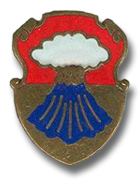 2nd MTB, 67th Armor crest 2nd MTB, 67th Armor crest |
||||||||||||||||||||||||||||||||||
| (Source: Unit introduction pamphlet for newcomers, 2nd Bn, 67th Armor, 1962 edition) | ||||||||||||||||||||||||||||||||||
|
||||||||||||||||||||||||||||||||||
| The exploits of the 2d Armored Division during World War II occupy an important place in the military annals of our country, and the 67th earned a just and abiding place in these annals. From North Africa to Sicily, then on thru Central Europe, the 67th was in the vanguard of the US Forces, Europe. The 2d Medium Tank Battalion, 67th Armor participated in the following Campaigns: Algeria-French Morocco, Sicily, Normandy, Northern France, Rhineland, Ardennes-Alsace, and Central Europe. The heroic actions of members of this unit won for it the Distinguished Unit Citation for the Normandy and Siegfried Line Campaigns. At the conclusion of World War II, the 67th Armored Regiment was one of the units selected to occupy Berlin. Here, as a part of the Regiment, the Battalion was responsible for laying the ground work which constitutes the excellent relations existing today in Berlin, between the peoples of the United States and Germany. After almost 6 years of magnificent service, during peace and war, the 2d Medium Tank Battalion, 67th Armor, was disbanded on 25 March 1946. After this date the 2d Medium Tank Battalion, 67th Armor was redesignated many times (i.e. on 6 February 1947 as Troop B, 321st Mechanized Cavalry Recon Squadron, on 21 October 1948 as Company B, 304th Armored Cavalry Regiment). On 1 April 1957, the 2d Medium Tank Patton, 67th Armor was designated under CARS (Combat Arms Regimental System) and was assigned to the 4th Armored Division at Fort Hood, Texas. The battalion participated in "Operation Gyroscope" in October 1957, arriving at its present station, Monteith Barracks, Furth, Germany. Since its arrival in Europe the 2d Medium Tank Battalion, 67th Armor has participated in many notable events. The fist was 7th Army exercise "SABER HAWK" in 1958. This was followed by such famous maneuvers as WINTER SHIELD I (attached to 24th Infantry Division) WINTER SHIELD II and PEACEMAKER. The 67th has further perpetrated the Division Motto, "They Shall Be Known By Their Deeds Alone" by the record it earned during the 7th Army Tank Gunnery Shoots at Bergen Hohne in 1958, 1960, and 1961. If one checks the Trophy Cases in the Tank Companies and Battalion Headquarters, they will find the First Place Trophy for High Battalion in 7th Army in 1960 and 1961, First Place Company in 7th Army 1960, First Place platoon in 7th Army in 1960 and many, many other worthy gunnery awards. Our Battalion, throughout its history has excelled in every undertaking. This documentary of the highlights of these accomplishments should provide each member of the organization the incentive to preserve and perpetuate the outstanding history of the 2d Medium Tank Battalion, 67th Armor. |
||||||||||||||||||||||||||||||||||
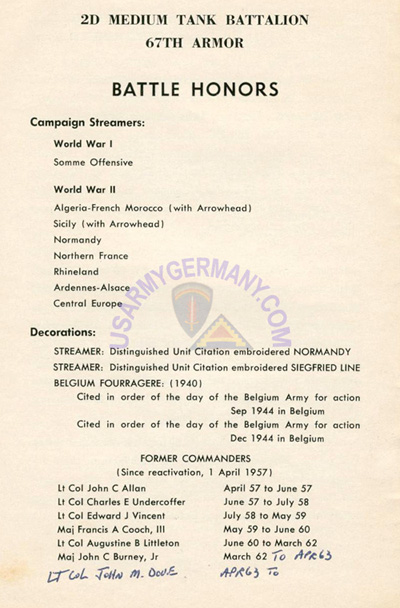 |
||||||||||||||||||||||||||||||||||
| Webmaster note: The 2-67th Arm was redesignated 1 July 1963 as 2nd Battalion, 67th Armor and concurrently relieved from assignment to 4th Armored Division, and assigned to 2nd Armored Division (CONUS). The Bn was transferred (less personnel and equipment) from Germany to Fort Hood, Texas, and reorganized (under ROAD). In Germany, the 2nd Bn, 37th Armor was activated in Fürth and assumed the personnel and equipment of the former 2-67th. |
||||||||||||||||||||||||||||||||||
| Related Links: 4th Armored Division Yearbook 1958 - the entire book (200 pages) is posted in the 2nd Bn, 5th FA Wiley Bks website. |
||||||||||||||||||||||||||||||||||
